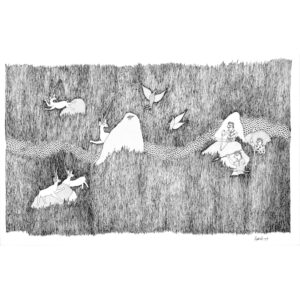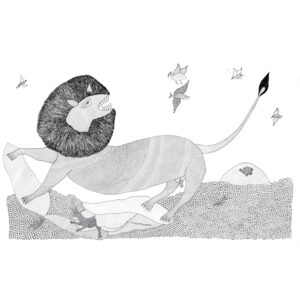Kalighat folk paintings, as suggested by the name, were created near the Kali temple in south Calcutta. Kalighat painters belonged to the Patua community of Bengal. From the 1830s until the 1930s, these paintings were sold as souvenirs among pilgrims and tourists visiting the temple. The Kalighat painters did not have the same exposure as Company School painters of the time, and so developed a visual language that was devoid of European influence. The bold lines, flat colors, and choice of themes of Kalighat paintings were different from both traditional Pats and Company schools.
In the 1870s, with the change in market trends, new themes started to emerge, both religious and non-religious. Satirical depiction of the newly affluent middle class or ‘Bhadralok’ is one of the most famous of its type. Women were often shown as dominating their submissive husbands and chastising the “Babus” for their immoral behavior. The urban nouveau riche became an example of crooked morals as a result of colonialism and modernity, a theme that did not escape the eye of the migrant painter.
“Wealthy zamindars spending their money on wine and women, foppish Babus spending their day and night at nasty places. These would not escape the searching eyes of these artists and they would draw the caricatures in such a way as would repel ordinary people from such activities.” mentioned Mukul Dey in one of his articles.






